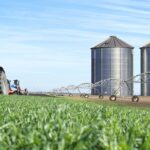Weeds are one of the biggest threats to agricultural productivity, competing with crops for essential nutrients, water, and sunlight. Left unchecked, they can significantly reduce yields and profits. Choosing the right herbicide is crucial for effective weed management. This guide will help farmers understand herbicide types, application methods, and best practices for maximum efficiency.
Types of Herbicides
- Selective vs. Non-Selective Herbicides
- Selective Herbicides target specific weeds while leaving crops unharmed (e.g., 2,4-D for broadleaf weeds in wheat fields, Butachlor for paddy fields).
- Non-Selective Herbicides kill all vegetation and are used for land clearing or pre-planting weed control (e.g., Glyphosate for fallow land preparation).
- Pre-Emergent vs. Post-Emergent Herbicides
- Pre-Emergent Herbicides prevent weed seeds from germinating (e.g., Atrazine in maize fields, Pendimethalin in soybean fields).
- Post-Emergent Herbicides are applied after weeds have sprouted to eliminate them (e.g., Paraquat for quick weed burn-down in tea plantations).
How to Choose the Right Herbicide
- Identify the Weed Type: Farmers dealing with Amaranthus (pigweed) in maize fields should use Atrazine, while Cyperus (nutgrass) requires a different approach.
- Consider Crop Sensitivity: Using Glyphosate in a standing crop would destroy it, whereas a selective herbicide like Metribuzin in potato fields targets only the weeds.
- Soil & Climate Conditions: Some herbicides, like Diuron, work best in dry conditions, whereas others require moisture for activation.
- Mode of Action: Rotating herbicides with different active ingredients (e.g., using Paraquat one season and Glufosinate the next) prevents weed resistance.
Best Practices for Herbicide Application
- Use the recommended dosage to prevent resistance and environmental damage.
- Apply at the right growth stage for maximum effectiveness.
- Follow safety guidelines and use protective gear.
- Rotate herbicides to avoid resistance buildup.
Proper herbicide use can significantly improve farm productivity while maintaining soil health.







